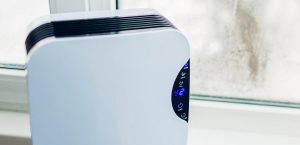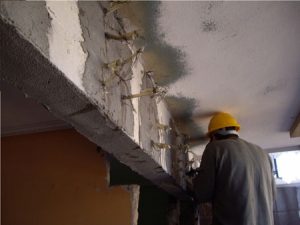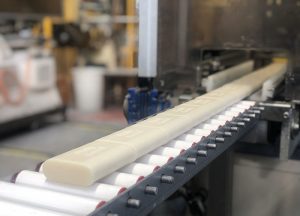Use of dehumidifier and humidification to maintain a healthy home in every way
It is impressive how excessive saturation can affect the structure or materials of a building, so much so that they can weigh much more than normal, damaging structural and aesthetic issues. For example, when there is  a relative humidity that is above 60%, then a cubic foot (30 cm3) of wood could weigh up to 30 pounds (more than 13 kilos). Obviously if that saturation is reduced, the wood is lightened.
a relative humidity that is above 60%, then a cubic foot (30 cm3) of wood could weigh up to 30 pounds (more than 13 kilos). Obviously if that saturation is reduced, the wood is lightened.
The problem with all this is that these fluctuations in humidity sooner or later seriously damage a building, be it its studs, texture and resistance of the plaster, an eventual shrinkage of wooden beams, among other structural issues. To that must be added, the inherent damage of a high atmospheric saturation towards other precious objects, such as furniture, books and works of art.
In this sense, it is essential to maintain the humidity and temperature parameters properly controlled, including desiccants and humidifiers, to put them to work depending on the climatic season and the region.
Another problem that can be seen is the generation of static, which could invariably affect the different systems and electronic devices in a closed area. This happens very often in winter, when the interior of the houses tends to be dry, due to the natural increase in temperature during those cold climates. This is maximized in the printing centers, where the press machines could be in a malfunction with jams and other inconveniences, jeopardizing the quality of the product that is delivered; also generating a problem in the  machinery or inputs that are highly flammable, representing a danger to people.
machinery or inputs that are highly flammable, representing a danger to people.
In that sense, a solution for this kind of premises or buildings is to have a spraying system that provides constant humidification during cold and dry climates. Ultrasonic or duct-type humidifiers could be a great option.
The importance of dehumidification to eliminate contaminants
Now let’s look at the other side, excess moisture. Now more than ever, it is not only about controlling thermal issues in a closed environment, but also about eradicating contaminants that are very harmful to everyone. It is precisely this amalgam of stale air that results in poor ventilation, as well as excess humidity. The integrity of a building is affected by these two factors. So, what to do? First of all, check that the ventilation rates are adequate, both for natural or mechanical ventilation inputs and outputs, which incidentally, in the aeration  devices, it is essential to always check them, so that there is no accumulation of dirt of its internal parts, because most of the time, an unhealthy building is due to inadequate oxygenation by fans or extractors in poor condition, also taking into account that natural ventilation is not very effective in certain types of buildings.
devices, it is essential to always check them, so that there is no accumulation of dirt of its internal parts, because most of the time, an unhealthy building is due to inadequate oxygenation by fans or extractors in poor condition, also taking into account that natural ventilation is not very effective in certain types of buildings.
The concentration of pollutants can be avoided, as long as there are air inlets and outlets, with devices of recent technology and that are of quality. To eliminate high humidity that encourages unbreathable air, it is essential to have dehumidifiers in all areas, where they involve high atmospheric saturation.
According to experts, the same ventilation can affect the flow of humidity, which later these particles would come to alter the structure of the building; in that sense, the best thing is a root eradication, through dehumidifiers and advanced extraction systems.
There are some buildings or private homes that have problems of amalgam of ventilation, air conditioning and humidification, because they have systems that provide all that air conditioning, especially in predominantly hot places. That combines a whole moisture with microorganisms and even chemical agents, harmful to human health. It is necessary to try to counteract all that.




